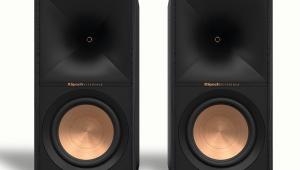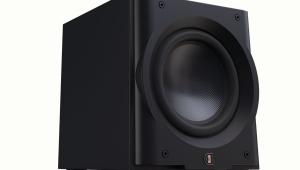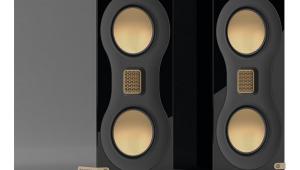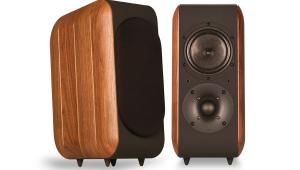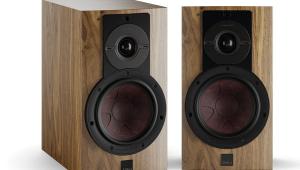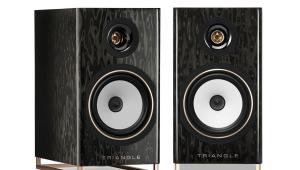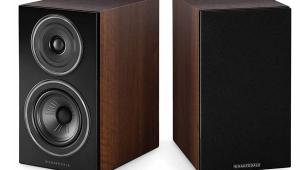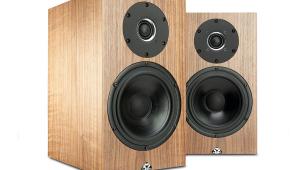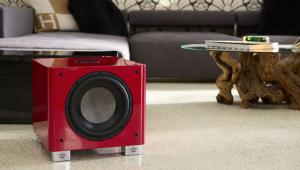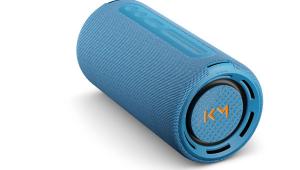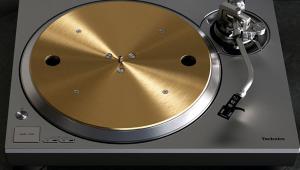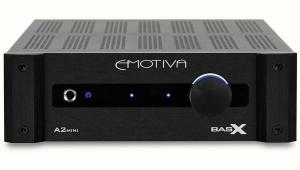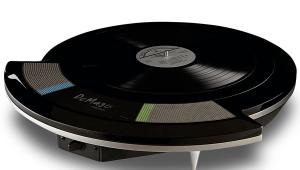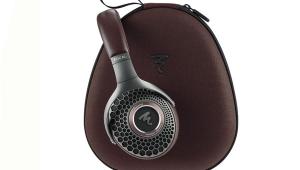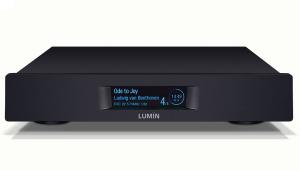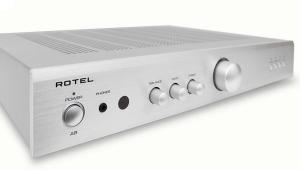Elac Air-X 403 - £2,848
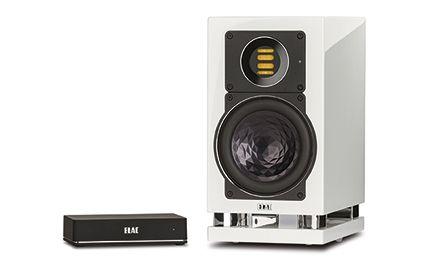
There are umpteen wireless speakers around now, but what makes the Air-X 403 interesting is that it’s aimed at serious audiophiles and yet is (relatively) affordable. Starting at £2,499 for these entry-level 403s plus £349 for the base station, there’s also the option of the larger 407 floorstanders for £4,299.
Elac makes very fine loudspeakers and has done some pioneering work especially with tweeter technology over the years. So we’re not talking about a consumer electronics company sticking its wireless tech into any old pair of transducers here! They are effectively active, wireless versions of the highly capable BS 403 passive standmounter. The question is, how well has the company implemented the wireless side and the active amplification?
The speakers contain the Air-X Amp, which the Air-X Base station sends the music to. The latter is the central control unit to which a wide variety of sources and output signals can be connected. Music is losslessly transmitted at 24-bit/48kHz, which is better than CD but not quite top resolution digital. The amplifiers used inside are Class AB. Without getting too deterministic, many believe that Class D is a less satisfactory sounding way of amplifying a signal in musical terms, so it’s interesting that Elac has opted to take the long way home and gone for the less easy option. One insider told me that the Jet tweeter didn’t sound good enough when engineers tried Class D amplifier modules, so AB it was. The combined output is claimed to be 150W (into 4ohms), and an internal 56-bit DSP chip allows tweaking of the sound to suit the listener’s environment.
Air time
The drive unit compliment includes the latest-generation Elac Jet 5 tweeter, with a 150mm AS-XR bass/mid driver sporting an interesting crystal pattern aluminium and paper sandwich cone. It’s said to have an additional strut at the coil former centre in addition to the convention central connection. Crossover is at a fairly standard (for a two-way speaker) 2.7kHz. The cabinet is as per the BS 403; a solid affair with an immaculate piano lacquer finish, it has a downward-firing bass reflect port and an integral plinth assembly.
The Air-X 403 can be used as a conventional active loudspeaker; there are balanced XLR and phono sockets on the back so you can drive it direct from an analogue preamplifier should you wish. But there’s also the wireless option and for this you’ll need to spend an additional £350 for the Air-X Base station. Via SMSC DWAM 83 modules, it runs a 2.4GHz lossless KleerNet wireless network between it and the loudspeakers. It’s very stable and has a range of up to 50m, which should be sufficient for all but the biggest listening rooms.
The base station sports a range of digital and analogue inputs. There’s the usual USB and optical digital, as well as analogue via RCA phonos and a 3.5mm minijack. However, oddly there is no coaxial digital (which precludes my Sony Blu-ray player from working with it), and nor is there Bluetooth. In fairness, there is an additional Bluetooth module available for £120, but it is odd that it isn’t built in given that most active speaker systems now have this facility. I hope that the next-generation base station has these extra inputs, as it rather limits its appeal.
Sound quality
One bonus of the system that Elac uses is that it offers true multi-room capability. The base unit acts as the central controller and can connect an almost unlimited number of Air-X loudspeakers, to which up to four signals in three zones can be transmitted. I try an additional pair of Air-X 407s added to the network, and test them out playing either the same source as I have the 403s playing, or a different one. In both cases the system is seamless and the wireless connection is faultless; it’s a very elegant implementation of the technology, and far better than some other slightly shaky systems that I’ve come across.
The problem with some wireless loudspeakers can be that they’re often wireless first, and speakers second – or indeed loudspeakers last. This is something that most certainly does not afflict the Air-X 403. As soon as you start listening it’s clear that this is a fine hi-fi design – which also happens to have the option of active, wireless operation. You can hear the essence of the BS 403 very, very easily; because this is what the Air-X version is, but with added functionality. All of which means that you get a very smooth, delicate, detailed sound that you would never call boring. In short, the Air-X version comes very close to offering the best of both worlds.
Fed by the base station, in turn running from the optical output of a high-end Sony optical disc transport, the Elac system turns in an excellent performance – one that I wasn’t quite expecting considering it’s being run in wireless mode. The 403 is a smallish standmounter, but doesn’t sound anywhere near as compact as it looks. It is able to fill a largish listening room with big, confident sound with an ease that I wouldn’t normally expect. Furthermore – and this is possibly at least in part due to its active operation – there is no sense of the music being squeezed through a toothpaste tube, as is sometimes the case with small speakers. The stock BS 403 is rather inefficient, and needs a powerful transistor amplifier to give of its best, but here in active mode it is relaxed, expansive and surprisingly easy – a bit like a smallish car with a big, torquey engine crammed under the hood.
James Taylor Quartet’s Stepping Into My Life is a lovely late nineties slice of gentle soulful funk – or acid jazz as it was once called. The Air-X 403 shows the recording in all its finery; it’s laid back and warm, and so the Elac system is too. There’s very little sense of the cabinets inducing boom or of the speaker having a sweet spot in the bass; that downward-firing port seems to work well.
A quick flick over to the 407 floorstanding version that I have to hand shows it is missing an octave or so of bass, but you won’t really miss this if you stick with the 403. Like many standmount versions of floorstanders, it also has a rhythmic sleight of hand to its low frequencies that the floorstander doesn’t seem to possess. The bigger box is in no way bad in its ability to convey how the song pushes along, but still the little one seems to be a little less troubled by the sort of room positioning issues that effect bigger speakers. Stepping Into My Life gets into a quick, propulsive groove and makes listening fun.
Next I feed it something a little more intense, Supertramp’s Child Of Vision. This is a slightly forward sounding album, even the LP version is a little bright, but the Air-X 403 keeps a good balance. Yes, there is definitely a more brilliant light cast on the upper midband than with the James Taylor Quartet track, and the greater dynamics really make themselves apparent, but the Elac speaker system keeps everything well controlled. Bass is punchy – if not terribly extended, the midband clean and spacious and the treble smooth and wonderfully sophisticated. Indeed, the excellent recording quality of this Supertramp song illustrates just how sweet sounding that Jet tweeter is. I’ve heard several evolutions of this Elac high-frequency unit and this seems the best yet; it sparkles with detail and has a wonderful sense of space, but still never sounds bland or over smooth. It’s a great part of the team!
Running from my MacBook Pro into the USB input is no less impressive, with Beethoven’s Sixth Symphony sounding expansive with excellently resolved low-level detail and fine imaging. It places instruments accurately and boldly, giving a commanding feel and even makes a good stab at recreating the concert hall’s sense of perspective.
The active speakers are better still when fed direct, bypassing wireless. Interestingly though, there isn’t a massive jump forward in sound, suggesting that the wireless has been done very well. Instead there is a subtle improvement in grip and low-level detail, with a slight deepening of the soundstage. Going back to wireless, this time feeding the base station with an analogue input from an Audiolab 8200CD player, again gives very good results – it remains smooth and surprisingly detailed, showing that it doesn’t treat analogue signals as a poor relation. The Texas Instruments PCM1803 A/D converter is obviously a quality item, like the rest of the system.
Conclusion
An excellent product, your money buys you a very fine loudspeaker with built in preamplifier, DAC, wireless transmission system and power amplifiers for £2,850. You’d struggle to match this in value terms as an all-in package; finding a decent integrated to drive the speakers would cost £1,000 or more on its own. So the new Air-X comes heartily recommended and is well worth auditioning if you’re looking to live in a world without wires. Its sound is in a different league; the Elac is one of the best sounding wireless solutions on sale right now.
LIKE: Crisp, clean, smooth sound; robust wireless
DISLIKE: No coaxial digital in or aptX Bluetooth as standard
WE SAY: Serious sounding active standmount loudspeakers with 24-bit/48kHz wireless
DETAILS
PRODUCT Elac Air-X 403
ORIGIN Germany/China
TYPE 2-way standmount loudspeaker with 24/48 wireless
WEIGHT 7.8kg
DIMENSIONS (WxHxD) 166 x 308 x 280mm
FEATURES • Jet 5 tweeter, 150mm AS-XR mid/bass driver
• Claimed power: 2x 150W into 4ohms
• 2x optical; 1x USB; 1x RCA phono; 1x 3.5mm analogue inputs
DISTRIBUTOR Hi-Fi Network
TELEPHONE 01285 643088
WEBSITE hifi-network.com
 |
Inside this month's issue:
Ruark R610 music system and Sabre-R standmount speakers, PMC twenty.23i Active, floorstanders, English Acoustics Downton preamplifier, Bluesound NODE ICON preamp/streamer, Ortofon Concorde Music Blue MM cartridge and much, much more
|
